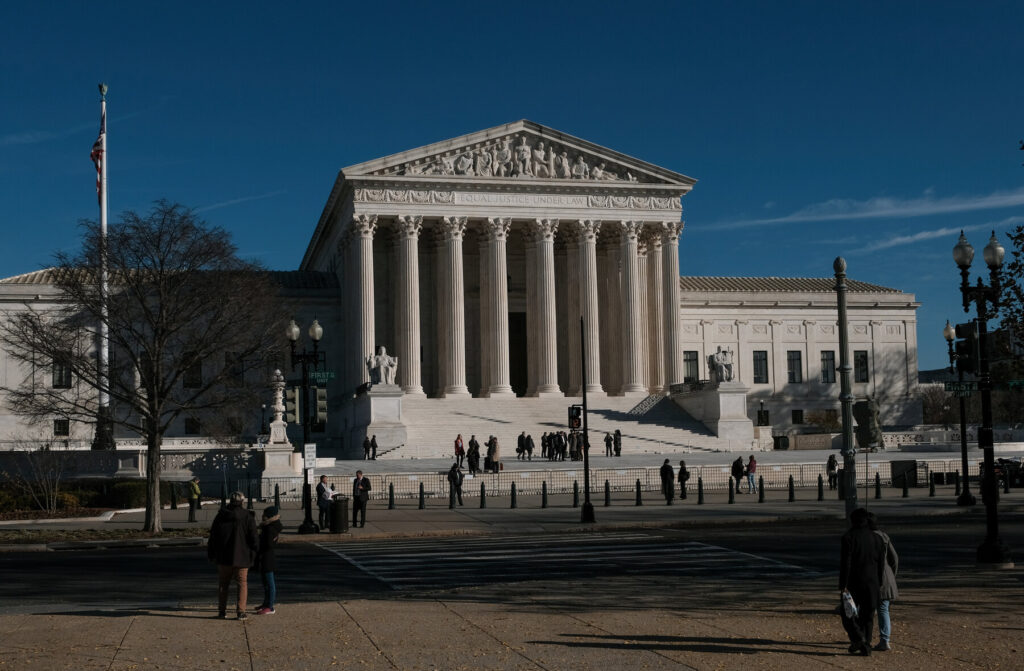
Supreme Court grapples with scope of attorney-client privilege
The scope of legal professional-patron privilege reached the Supreme Court on Monday as justices grappled with arguments on while communications intertwined with felony and enterprise recommendation ought to be protected from courtroom docket complaints.
The case’s historical past stays shrouded in mystery, however the justices’ ruling on how widespread a felony cause need to be for legal professional-patron privilege to use should have broader implications for in-residence counsels and tax companies that ship so-referred to as twin cause communications, which offer each felony recommendation and enterprise strategy.
Public filings offer few information about the statistics of the dispute, best indicating it arose from an unnamed tax regulation company’s refusal to provide a few files in reference to a crook tax research into an unnamed patron. Other courtroom docket filings continue to be below seal.
The federal authorities in courtroom docket filings indicated the patron changed into an “early promoter of bitcoin” who leveraged the company to resource their expatriation from the U.S.
Daniel Levin, arguing on behalf of the unnamed company, advised the justices to use legal professional-patron privilege to communications containing a “widespread” felony cause, if nonlegal factors can’t be separated.
He contended that mechanism might align with a Court of Appeals for the D.C. Circuit opinion authored with the aid of using then-Judge Brett Kavanaugh. But Masha Hansford, arguing on behalf of the federal authorities because the assistant to the solicitor general, preferred a “number one-cause” check used by a couple of different appellate courts.
“Taken seriously, that check calls for events and courts to disentangle competing functions and to perceive the unmarried maximum critical one. That is an inherently not possible exercise,” Levin stated of the number one-cause check.
A quantity of justices regarded disinclined to dramatically increase the privilege, believing that many courts already the use of the extra stringent check don’t clearly parse near calls of which cause ought to be deemed the singular, number one one.
“To a sure extent, I suppose we’re speakme approximately labels in place of analysis,” stated Chief Justice John Roberts. Justice Elana Kagan in addition requested Levin to reply to the “historic felony principle” of “if it ain’t broke, don’t restoration it.”
Levin argued that if the justices inform decrease judges they need to rank which cause is predominant, it creates an unpredictable check that could result in a chilling impact in communications with attorneys. His role changed into supported with the aid of using briefs from the U.S. Chamber of Commerce and a few legal professional groups.
Levin asserted that the justices should lay out a extra predictable check with the aid of using now no longer requiring a selected percent of the verbal exchange’s cause be felony recommendation. Instead, any verbal exchange containing a “actual and legitimate” felony cause that can’t be separated from nonlegal factors ought to be privileged, Levin argued.
The federal authorities raised issues that Levin’s idea might permit agencies to guard communications from courtroom docket complaints every time they “would possibly have one eye at the felony implications.”
“I bet I see that as problematic,” Justice Ketanji Brown Jackson in addition informed Levin. “Why shouldn’t I fear that the use of your check now, we’re going from one excessive to the different?”
Justice Amy Coney Barrett requested Hansford if it’s high-quality for the justices to “say nothing” with the aid of using opining that courts ought to privilege communications with a number one felony cause however depart it to a courtroom docket’s discretion approximately what that means.
“I don’t suppose there’s a trouble withinside the decrease courtroom docket case regulation, so I suppose the Court should say nothing,” Hansford responded. “I suppose the Court may also say number one cause, while there may be an identifiable number one cause, that must be the proper one in conditions wherein it’s truely near.”






